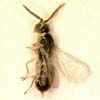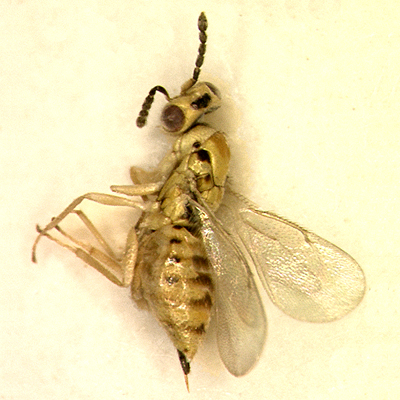 |
|
| |
Home |
|
Open
the Key |
|
|
|
References |
|
|
|
|
|
|
|
|
|
|
|
|
|
|
|
|
|
|
|
|
|
|
|
|
|
|
|
|
|
|
|
|
|
|
|
|
|
|
|
|
|
|
|
|
|
|
|
|
|
|
|
|
|
|
|
|
Aprostocetus
Westwood, 1833
|
|
|
|
|
|
|
|
|
|
|
|
|
|
|
|
|
|
|
|
|
|
|
|
|
|
|
|
|
|
|
|
|
|
|
|
|
|
|
|
|
|
|
|
|
|
|
|
|
|
|
|
|
|
|
|
|
|
|
|
|
|
|
|
|
|
|
|
|
|
|
|
|
|
|
|
|
|
|
|
|
|
|
|
|
|
|
|
|
|
|
|
|
|
|
|
|
|
|
|
|
|
|
|
|
|
|
|
|
|
|
|
|
|
|
|
|
|
|
|
|
|
|
|
|
|
|
|
|
|
|
|
|
|
|
|
|
|
|
|
|
|
|
|
|
|
|
|
|
|
|
|
|
|
|
|
|
|
|
|
|
|
|
|
|
|
|
|
|
|
Distribution |
|
|
|
|
|
|
|
|
|
|
|
|
|
|
|
|
|
|
|
|
|
|
|
|
|
|
|
|
|
|
|
|
|
|
|
|
|
|
|
|
|
|
|
|
|
|
|
Biology |
|
|
|
|
|
|
|
|
|
|
|
|
|
|
|
|
|
|
|
|
|
|
|
|
|
|
|
|
|
|
|
|
|
|
|
|
|
|
|
|
|
|
|
|
|
|
|
Comments |
|
|
|
|
|
|
|
|
|
|
|
|
|
|
|
|
|
|
|
|
|
|
|
|
|
|
|
|
|
|
|
|
|
|
|
|
|
|
|
|
|
|
|
|
|
|
|
|
|
|
|
|
|
|
|
|
|
|
|
|
|
|
|
|
|
|
|
|
|
|
|
|
|
|
|
|
|
|
|
|
|
|
|
|
|
|
|
|
|
|
|
|
|
|
|
|
|
|
|
|
|
|
|
|
|
|
|
|
|
|
|
|
|
|
|
|
|
|
|
|
|
|
|
|
|
|
|
|
|
|
|
Classification
|
|
|
|
|
|
|
|
|
|
Subfamily
Tribe |
Tetrastichinae
Tetrastichini
|
|
|
|
|
|
|
|
|
|
|
|
|
|
|
|
|
|
|
|
|
|
|
|
|
|
|
|
|
|
|
|
|
|
|
|
|
|
|
|
|
|
|
|
|
|
|
|
|
|
|
|
|
|
|
|
|
|
|
|
|
|
|
|
|
|
|
|
|
|
|
|
|
|
|
|
|
|
|
|
|
|
|
|
|
|
|
|
|
|
|
|
|
Diagnosis
|
|
|
|
|
|
|
|
| |
Fore
wing with submarginal
vein (SMV) with 2 or more setae dorsally. Postmarginal
vein (PMV) reduced, less than 0.5 the length of the
stigmal vein (STV), or absent.
Antenna of female with anelli
discoid to laminar, usually 4, rarely 3 or 2; funicle
3-segmented. Male antenna with plaque
on scape quite large and with
funicle 4-segmented. Club most often with 3 segments.
In almost all males, each funicular segment bears a compact
subbasal whorl of moderately long to very long dark setae.
Male scape sometimes swollen.
Anterior margin of clypeus bidentate. Mandible tridentate.
Malar
sulcus present, usually straight or just weakly curved,
rarely with fovea below the eye.
Thorax with pronotum usually short and without a transverse
carina. Notauli
present and complete. Midlobe of mesoscutum with a single
row of adnotaular
setae just mesal to the notaulus. Scutellum
with 2 pairs of setae and with 2 pairs of longitudinal
lines. Mid lobe of mesoscutum with or without a median
line.
Median
carina usually present; plicae and paraspicular carinae
absent. Propodeum with a raised lobe of the callus, which
partially overhangs the outer rim of the spiracles.
Cercal
setae unequal in length, with one being distinctly
longer than the others and sinuate.
Colour of the body metallic or non metallic, with
or without
pale markings.
Ovipositor usually projecting at least slightly, sometimes
very far, in rare case even longer than the body.
|
|

|
|
|
|
|
|
|
|
|
|
|
|
|
|
|
|
|
|
|
|
|
|
|
|
|
|
|
|
|
|
|
|
|
|
|
|
|
|
|
|
|
|
|
|
|
|
|
|
|
|
|
|
|
|
|
|
|
|
|
|
|
|
|
|
|
|
|
|
|
|
|
|
|
|
|
|
|
|
|
|
|
|
|
|
|
|
|
|
|
|
|
|
|
|
|
|
|
|
|
|
|
|
|
|
|
|
|
|
|
Distribution
|
|
|
|
|
|
|
|
|
|
|
Aprostocetus, cosmopolitan in distribution,
is a very large genus: it is the largest genus in the Tetrastichinae
and one of the largest of chalcids (Noyes,
2001).
|
|
|
|
|
|
|
|
|
|
|
|
|
|
|
|
|
|
|
|
|
|
|
|
|
|
|
|
|
|
|
|
|
|
|
|
|
|
|
|
|
|
|
|
|
|
|
|
|
|
|
|
|
|
|
|
|
|
|
|
|
|
|
|
|
|
|
|
|
|
|
|
|
|
|
|
|
|
|
|
|
|
|
|
|
|
|
|
|
|
|
|
|
|
|
|
|
|
|
|
|
|
|
|
|
|
|
|
|
Biology |
|
|
|
|
|
|
|
|
|
|
|
Aprostocetus displays a wide range in
host and biology.
Many species of the subgenus Aprostocetus are primary
parasitoids of hosts in plant galls, as Diptera Cecidomyiidae
in particular, but also Hymenoptera Cynipoidea, Coleoptera, Coccoidea,
and eriophyid mites. Moreover, some species are occasional parasitoids
of Diptera and Lepidoptera leafminers.
Species of Chrysotetrastichus are egg parasitoids of
Coleoptera Chrysomelidae.
Coriophagus species are egg parasitoids of Hemiptera
Cicadellidae and Miridae.
Species of Ootetrastichus are egg parasitoids of Hemiptera
Cicadellidae and Delphacidae, Orthoptera Gryllidae, Odonata and
Coleoptera Dytiscidae.
Quercastichus species are parasitoids of gall-forming
Cynipidae.
Finally, species of Tetrastichodes are endoparasitoids
of cockroach oothecae (Blattodea)
(Graham (1987); Boucek
(1988); La Salle, 1994).
|
|
|
|
|
|
|
|
|
|
|
|
|
|
|
|
|
|
|
|
|
|
|
|
|
|
|
|
|
|
|
|
|
|
|
|
|
|
|
|
|
|
|
|
|
|
|
|
|
|
|
|
|
|
|
|
|
|
|
|
|
|
|
|
|
|
|
|
|
|
|
|
|
|
|
|
|
|
|
|
|
|
|
|
|
|
|
|
|
|
|
|
|
|
|
|
|
|
|
|
|
|
|
|
|
|
|
|
|
Comments |
|
|
|
|
|
|
|
|
|
|
|
Aprostocetus belongs to the subfamily of Tetrastichinae
by having female funicle 3 and male 4-segmented, notauli complete,
ventral plaque on male scape and postmarginal vein reduced.
Graham (1987) divided
this large genus in 5 subgenera: Aprostocetus Westwood,
Chrysotetrastichus Kostjukov, Coriophagus
Graham, Ootetrastichus Perkins and Tetrastichodes
Ashmead; La Salle (1994)
recognised another one: Quercastichus.
Aprostocetus may be easily confused with Baryscapus:
useful characters to distinguish them are the raised lobe of
the callus (partially covering the outer rim of the spiracle
in Aprostocetus) and the cercal setae (not all subequal
with one distinctly longer and sinuate in Aprostocetus).
Moreover, Aprostocetus may be confused with Quadrastichus
that has similar cercal setae; however, Quadrastichus
has only one single setae on submarginal vein, while Aprostocetus
has at least 2. Finally, Minotetrastichus
is another genus very close to Aprostocetus. It differs
in having the clypeal margin weakly lobed or truncate and the
propodeal spiracle small, circular and separated from the metanotum
by at least its own diameter. It also differs by having the
propodeal spiracle with its entire rim exposed and having the
two longest cercal setae subequal in length and straight or
just slightly curved (Graham,
1987, 1991; La
Salle, 1994; Schauff
et al., 1998).
A detailed key of the genus is provided for European species
(Graham, 1987).
|
|
|
|
|
|
|
|
|
|
|
|
|
|
|
|
|
|
|
|
|
|
|
|
|
|
|
|
|
|
|
|
|
|
|
|
|
|
|
|
|
|
|
|
|
|
|
|
|
|
|
|
|
|
|
|
|
|
|
|
|
|
|
|
|
|
|
|
|
|
|
|
|
|
|
|
|
|
|
|
|
|
|
|
|
|
|
|
|
|
|
|
|
|
|
|
|
|
|
|
|
|
|
|
|
|
|
|
|
|
|
|
|
|
|




